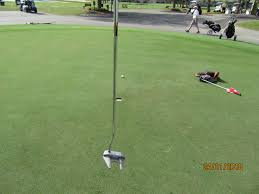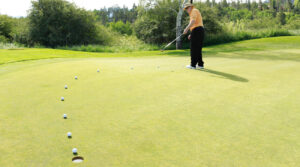Technology continues to change and that’s why the pros are hitting their shots longer and with more control. If you haven’t changed your clubs in the past 5 years, take the opportunity to tryout a new set of demo clubs from a number of different manufacturers. You will be surprised to find that the weight, shape and feel of different clubs will all give you new insights on your ability to improve your game.
Consider the Following Steps before your Change Your Clubs
Take a Private Swing Lesson
Don’t expect that a new set of golf clubs can solve your swing faults. Observations and recommendations from a PGA professional can steer you in a new direction with your swing problems. If you are changing your swing to fix one problem, you may be creating another problem. Very small changes in the position of your ball, the flair of your feet and your grip can create major problems or improvements in your swing. Start with a lesson and get back to the basics.
Changing Your Grips May be a Quick Fix
Changing your grips will give you a new feel for your existing clubs. A word of caution: There are 3 grip sizes (Regular, Midsize and Jumbo). Holding your clubs with “soft hands” is an important step to generating more power and distance so you would think that thicker grips could allow you to hold your club with a softer hold. I changed my driver grip to a Jumbo size to gain more distance with “soft hands”. I was told that Jumbo grips will cause me to fade my shots. (Changing to a stronger trailing hand grip was not a great solution for consistency.) The fitter was correct and I quickly changed back to a regular grip.

GOLF is wonderful when you are playing in “THE ZONE”. You control your game and it’s all in your mind to take control and lower your score.
The Good News about New Irons
The extra weight in the head of every new iron that you will try today will help you slow down your transition, help you hold your lag and give you more time to execute your weight shift from your trailing leg to your leading leg during your transition. Don’t rush the transition. USE LAZY HANDS to allow your hands to whip your club through impact. (Just listen to the whoosh at the bottom of every swing.)
At the practice range, you can feel the delay at the top and the whipping action of your club.
If you rush your swing during your round you will lose your weight transfer to your leading foot and you will lose that whooshing sound at your point of impact.
Tips
1/ Work with a Club Fitter
2/ Test out different shaft weights and flexes for your height and arm length.
3/ Compare your performance with new clubs to your existing clubs before you buy.
Feel the momentum of your club as you change direction at the top of your swing. (If you don’t feel it, you are swinging too fast.) Allow your weight to shift your leading foot, keep your left ear over the ball to bottom out your swing as your impact the ball and then graze the turf after the ball. Enjoy your new clubs and perfect your swing with GOLFSTR+. Buy one today at www.golfstr.com






 Overpowering your swing never generates the best results. A little less ummph is the answer. When you take a less lofted club and swing at 90% you will improve your direction and distance control. Choking down on a less lofted club and keeping your swing at 90% is also a good plan. If you plan to swing a club at a much slower swing, you will most likely impact your ball with an open face on your club and you will not finish your swing as your ball slices away from your target line. A very slow swing can mess up the physical sequence of your swing.
Overpowering your swing never generates the best results. A little less ummph is the answer. When you take a less lofted club and swing at 90% you will improve your direction and distance control. Choking down on a less lofted club and keeping your swing at 90% is also a good plan. If you plan to swing a club at a much slower swing, you will most likely impact your ball with an open face on your club and you will not finish your swing as your ball slices away from your target line. A very slow swing can mess up the physical sequence of your swing.


